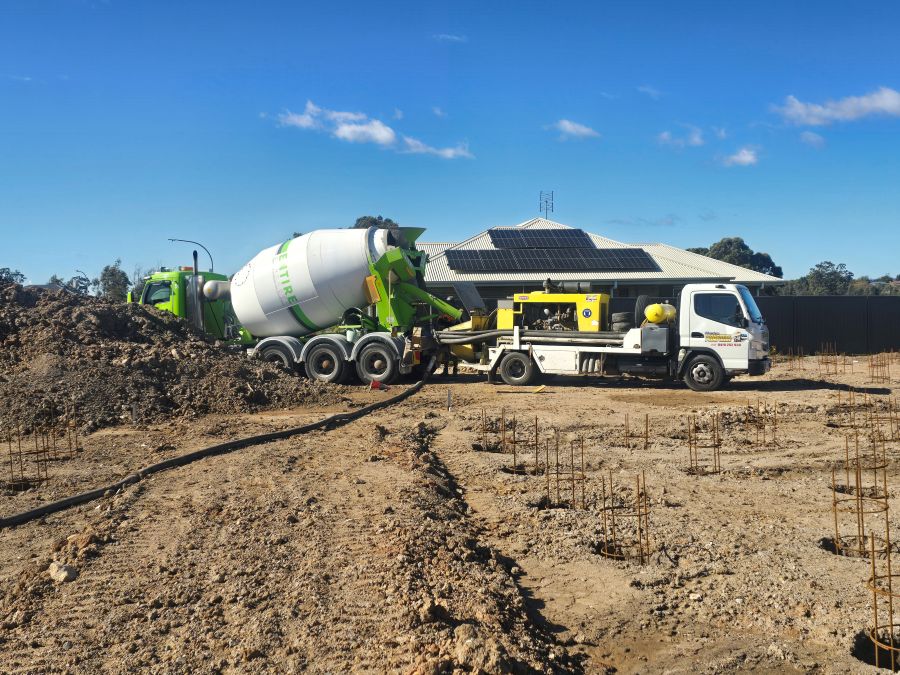Essential Best Practices for Ensuring Safe Concrete Pumping Operations in 2025
In the realm of concrete pumping safety for the upcoming year of 2025, it is crucial to underscore the importance of comprehensive training, meticulous equipment inspections, clearly defined exclusion zones, and thorough pre-start planning. Acknowledging the inherent risks tied to concrete pumping and rigorously adhering to established safety protocols are vital for preventing accidents and ensuring that construction projects proceed without delays. By placing these safety measures at the forefront, workers can cultivate a secure working environment that not only enhances efficiency and productivity but also lays a solid foundation for successful project execution.

Identifying and Mitigating Common Hazards in Concrete Pumping Operations
According to SafeWork NSW, both operators and workers involved in concrete placement face considerable risks during the setup and operation of concrete pumps. These hazards include:
- Unstable ground conditions or improper setup on sloped surfaces, which could lead to serious accidents.
- Utilising equipment beyond its design specifications, increasing the likelihood of mechanical failure.
- Proximity to overhead power lines, which presents severe electrocution risks.
- Collisions with trucks, structures, or site personnel that may result in significant injuries.
- Hose whip and line surges, which can create dangerous situations if not properly managed.
- Unexpected equipment failure and blockages that could disrupt operations.
- Exposure to crush zones, diesel fumes, and excessive noise levels, which can adversely impact health.
- Slip, trip, and confined space hazards that may lead to serious injuries.
These risks are not merely theoretical; they often become reality when safety procedures are neglected or not consistently enforced. Consequently, our focus remains on critical safety components on-site, ensuring that every worker is well-informed and adheres to established protocols, thereby fostering a safer working environment.
1. Emphasise Training and Certification for All Personnel Involved
Given that concrete pumps operate under high pressure, it is essential to impose stringent handling requirements for operators. In NSW, it is imperative that operators possess:
- An HR licence for operating boom trucks, verifying their qualifications.
- Authenticated VOCs (Verification of Competency) to substantiate their skill level.
- Training in hazard recognition and a thorough understanding of emergency stop procedures.
Additionally, hose handlers must receive comprehensive briefings to ensure they avoid standing in discharge zones and can quickly identify blockages, which is crucial for maintaining operational safety and preventing accidents. A well-trained crew ensures not only compliance with safety standards but also promotes a culture of safety awareness on site.
2. Implement Exclusion Zones to Strengthen Safety Protocols
Concrete under pressure can move swiftly and poses extreme risks if released unexpectedly. Therefore, it is imperative to have clearly defined safety zones surrounding the hose and boom at all times. Essential safety measures include:
- Utilising barriers and flagging to clearly delineate risk areas around the pumping operation.
- Prohibiting personnel from standing in front of the discharge area to avert injuries.
- Restricting movements beneath booms to reduce the chances of accidents.
By establishing these exclusion zones, we minimise the potential for accidents and ensure that all personnel are aware of their surroundings, significantly enhancing overall safety measures.
3. Conduct Thorough Equipment Inspections Before Each Concrete Pour
Every concrete pumping operation commences with a meticulous equipment inspection. At Hunter Concrete Pumps, we perform detailed checks on:
- Hoses and reducers to confirm they are in optimal working condition.
- Couplings and clamps to ensure secure and reliable connections.
- The integrity of the boom and seals to prevent any potential leaks.
- Primer levels, ensuring that the pump operates efficiently and effectively.
- Emergency shutoff systems to guarantee immediate response capabilities in the event of an incident.
No operation begins without the pump successfully passing all inspections, reinforcing our unwavering commitment to safety and operational efficiency. This proactive approach minimises the risk of equipment-related incidents during concrete placement.
4. Assign a Lead Operator for Enhanced Coordination and Communication
Effective communication is a vital element in the successful execution of concrete pumping operations. Each team must designate one lead operator who is responsible for overseeing the pour and ensuring coordination with:
- Agitator drivers to synchronise operations for a smooth and seamless concrete pour.
- Hose handlers who manage the flow of concrete in a safe and efficient manner.
- Site supervisors to ensure strict adherence to site regulations and safety protocols.
- Concreters and finishers to achieve the desired outcomes and quality of the project.
This established chain of command is crucial for preventing mistakes and misfires, ultimately enhancing both the safety and efficiency of the operation. Clear communication pathways ensure that every team member understands their role and responsibilities during the concrete pumping process.
5. Initiate Every Pour with a Comprehensive Safety Briefing
Prior to commencing the pump operation, it is essential that the crew discusses several critical topics, including:
- Site access and hose routing for optimal flow management and efficiency.
- Emergency response plans and first aid procedures to ensure readiness for any situation.
- Truck staging and washout procedures to maintain site cleanliness and organisation.
- Identifying slip risks and ensuring the proper use of PPE (Personal Protective Equipment) for every crew member.
- Defining the roles of spotters where necessary to enhance safety further.
At Hunter Concrete Pumps, we implement these protocols rigorously on every job, without exception, to guarantee not only the safety of our crew but also the integrity and success of the project.
Understanding the Critical Role of Safety in Concrete Pumping Operations
Ensuring safe concrete pours is paramount not only for protecting your crew but also for safeguarding your project timeline, budget, and reputation. A lapse in safety can lead to injuries, project delays, or regulatory scrutiny, which are risks that cannot be overlooked. We strictly adhere to the SafeWork NSW guidelines for concrete pumping on every job. Our operators are not only trained but also licensed and insured, ensuring that when you choose our services, you are opting for a provider that integrates safety into every aspect of the process.
Is it Necessary to Provide Spotters or Safety Personnel for My Concrete Pour?
For civil and commercial job sites, the answer is affirmative; spotters or safety personnel are essential for maintaining high safety standards. However, for residential projects, our dedicated pump crews are skilled at managing safety zones effectively, ensuring the site remains secure. We will inform you of any specific requirements during the quoting process to ensure clarity and compliance, thereby enhancing overall safety for all involved.
What Are the Most Common Safety Risks Associated with Concrete Pumping Jobs?
The three primary risks include untrained hose handling, inadequate access planning, and the absence of exclusion zones. We proactively address all three of these critical concerns before the concrete pour begins, ensuring a safer working environment for every individual involved in the operation. This proactive approach is essential for reducing the likelihood of accidents and ensuring that all safety protocols are followed diligently.
Experience Smooth and Safe Concrete Pours with Our Professional Expertise
Concrete pumping safety is not just about adhering to stringent regulations; it is fundamentally about ensuring the job is completed without injuries or delays. When your team is well-versed in safety procedures and your operator arrives fully equipped and prepared, the concrete pour can proceed smoothly, swiftly, and without complications, paving the way for successful project outcomes. Our commitment to safety and quality ensures that every concrete pour is executed with precision and care.
Concrete Pump Hire
The Article: Concrete Pumping Safety Protocols: 2025’s Top 5 Tips first appeared on https://writebuff.com
The Article Concrete Pumping Safety Tips: Top 5 Protocols for 2025 Was Found On https://limitsofstrategy.com


You’ve raised such an essential aspect of construction safety with your emphasis on thorough training and equipment inspections. Having worked on a few concrete pumping projects myself, I can attest to the significant difference that proper preparation and adherence to safety protocols make in day-to-day operations.
It’s great to hear from someone with firsthand experience in concrete pumping projects. It’s those daily operations where safety often walks a fine line, and your experience highlights how easy it is to overlook the basics when things get busy. In my research, I’ve found that even simple, routine tasks can turn risky without the right training and mindset.
Absolutely, your experience underscores the importance of diligent training and safety checks! If you’re looking for more resources to enhance your team’s safety practices, check out this informative guide.
https://verandaluxe.com/ParentAler